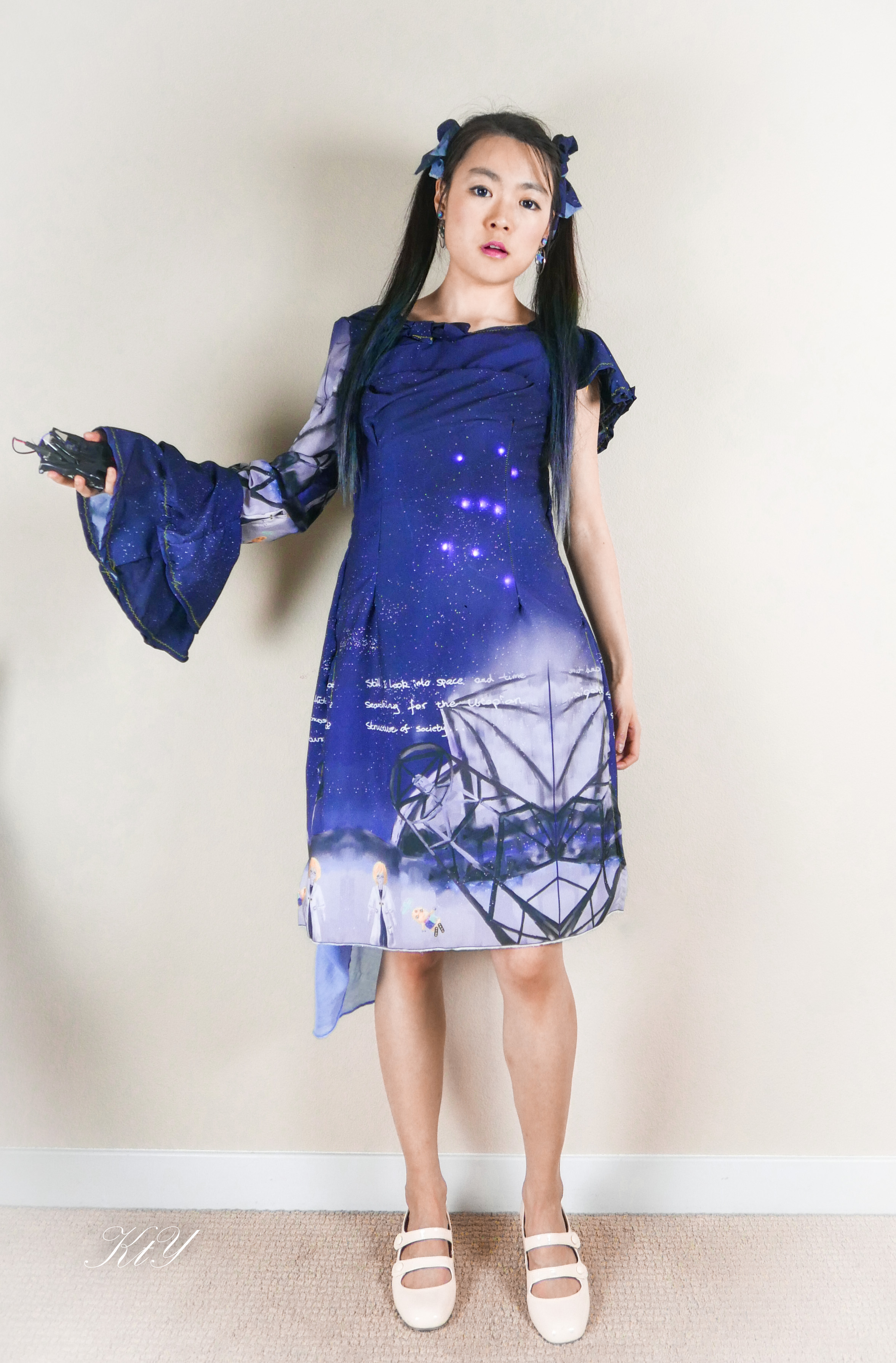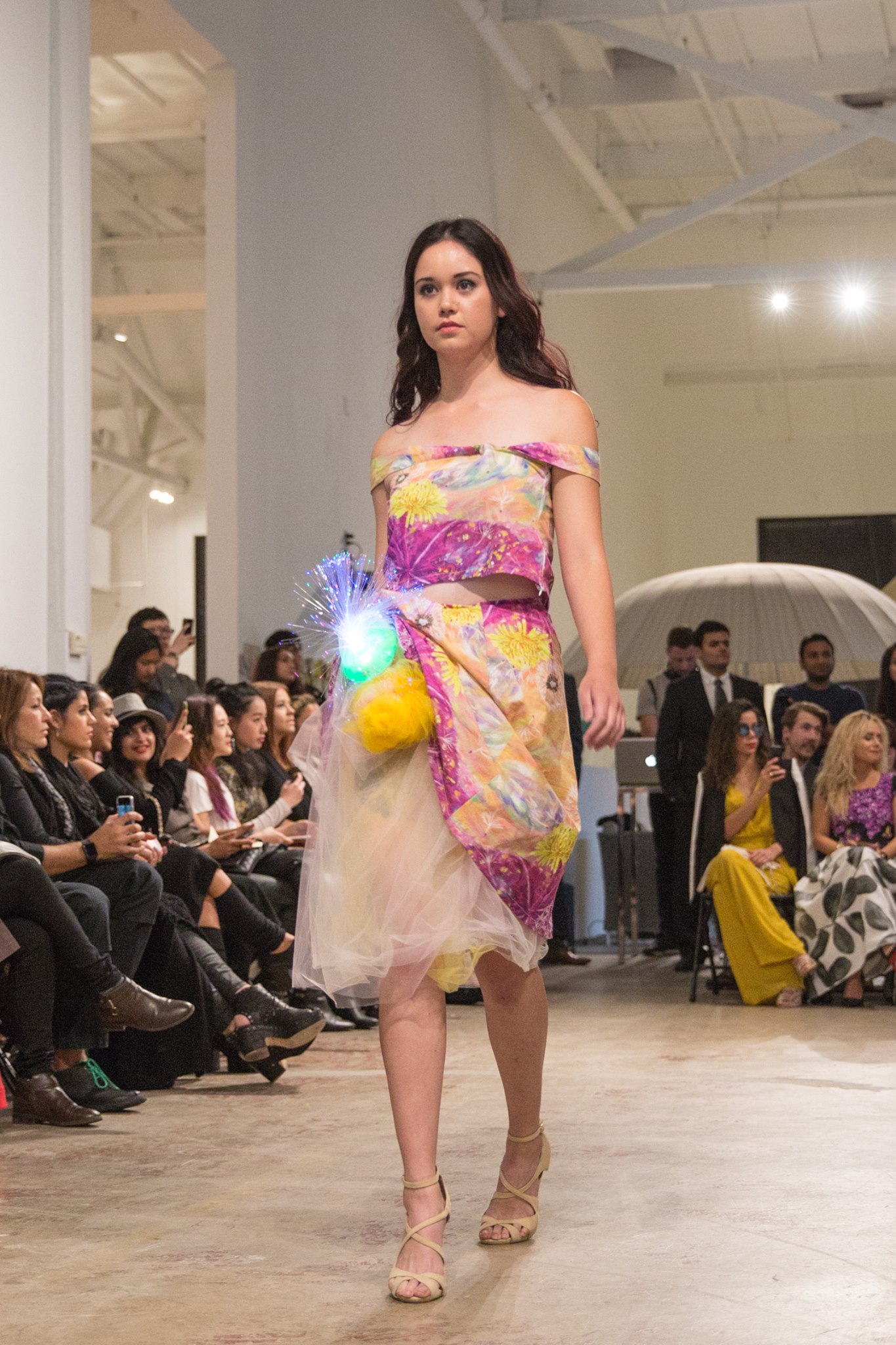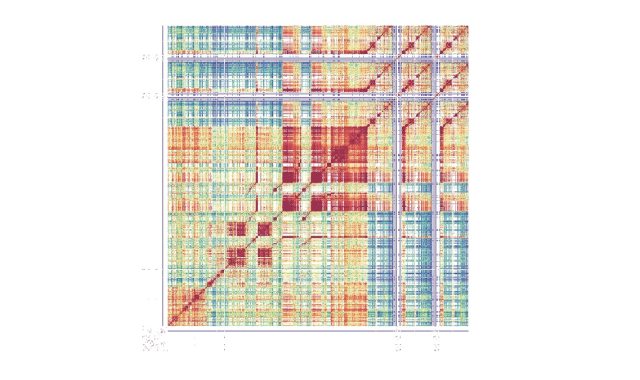When physics fuses with fashion
- 15 February 2018
- 5 minutes
 On first thought, you wouldn't expect physics and fashion to harmonise and inspire one another. However, after speaking to Caian Kitty Yeung (2010) and seeing her magnificent creations, it becomes clear that science and fashion are a perfect pairing.
On first thought, you wouldn't expect physics and fashion to harmonise and inspire one another. However, after speaking to Caian Kitty Yeung (2010) and seeing her magnificent creations, it becomes clear that science and fashion are a perfect pairing.
As a child growing up in Hong Kong and Shenzhen, China, Kitty (pictured top right) had ambitions to work in three quite different fields: science, music and art. For her education, she went down the science route which led her to Cambridge where she gained a BA, MA and MSci in Natural Sciences, and to Harvard University to study for a PhD in Applied Physics. Kitty says: “I love physics, as it is the study of the fundamental properties of nature. It guides me to see the beauty in the universe, to reach the bottom of problems and to find solutions by transferring skills across disciplines.”
Outside of the lab, Kitty pursued her passion for art by working on a series of projects including graphic novels, which continue to feature heavily in her portfolio. Gradually, she began to integrate these differing fields by applying technology and science to art forms such as painting and fashion design.
“At first, my designs were more traditional. Then I started printing my paintings onto fabrics and designed them into garments. Since I like to tinker with electronics, I thought there was no reason not to combine fashion with circuits. That's how I started designing clothes with technological features, embedding microcontrollers into garments (so they can be functional or decorative) and exploring new techniques in the garment manufacturing process."
After completing her PhD, Kitty began working as a Research Scientist for Intel in California, while expanding her work as a creative technologist on the side. Her two worlds collided in a spectacular, innovative fashion when she was asked to help create demonstrations for maker technology for Intel. Kitty designed garments and accessories embedded with the Intel Curie module – a small piece of hardware with a range of features including Bluetooth communication and motion sensors – transforming the way consumers use technology in their everyday lives. Kitty is due to leave Intel and will begin her new role as Senior Programme Manager at Microsoft at the end of February.
 When you imagine wearable technology, visions of functional fashion, such as an Apple Watch or FitBit, are conjured up in your mind – far from the editorials of Vogue or the catwalks of Paris. This isn’t the case with Kitty’s designs. Her clothing has the colour and playfulness of Erdem’s creations, but with a twist of Silicon Valley. Kitty’s clothes are desirable, not just for the fun of being able to control the colours of a dress through brain signals or having LEDs embroidered into the fabric, but because they are a true work of art.
When you imagine wearable technology, visions of functional fashion, such as an Apple Watch or FitBit, are conjured up in your mind – far from the editorials of Vogue or the catwalks of Paris. This isn’t the case with Kitty’s designs. Her clothing has the colour and playfulness of Erdem’s creations, but with a twist of Silicon Valley. Kitty’s clothes are desirable, not just for the fun of being able to control the colours of a dress through brain signals or having LEDs embroidered into the fabric, but because they are a true work of art.
Her process starts with a vision: “I believe something should exist that doesn't, so I create it myself, by hand. I envision an effect that the item should display and find the right technologies to achieve it. Sometimes I start with the visual effects (often astronomy or nature-inspired) and sometimes there are certain technologies I want to apply in wearables. For example, I've made clothing that can sense and respond to the wearer's motions, brain-signals, and gestures; a dress that displays constellations, and glasses that communicate through Bluetooth.”
While her approach to design may come from different angles, depending on her vision and inspiration, her focus is constant: “I always pay attention to both functionality and aesthetic appeal, and a good user experience, because these are all essential for a consumer-tech product to be successful and likable.”
The fashion industry has started to take note of Kitty’s work, with her creations being showcased at the 2016 San Francisco Fashion Week (pictured bottom right) where the theme was ‘Tech Drives Fashion’. Displaying a spectacular array of colour, both from the garments themselves (featuring Kitty’s own paintings) and a Microduino module designed to add dynamic colour changes, the collection fulfilled the brief and then some.
When asked about the pieces of work she’s most proud of, Kitty cites projects that help society from a pair of match-making sunglasses to educational resources that will assist others in building their own projects. She explains: “I'm proud that a lot of my projects are for education purposes. I write open-source instructions to teach people how to build their own projects. I hope to inspire more talents to pursue both technical and creative endeavours.”
Reminiscing on her time at Caius, Kitty says: “I received a solid education from Caius and really enjoyed the supervisions, formals and May Balls. It was wonderful to be among talented students and learn from so many great physicists. I also appreciate that the College let me stay in rooms with pianos inside over the summers when I was working in the Cavendish, so I could practise playing the piano and exercise different parts of the brain.”
Looking ahead to the future, she is planning more to expand her work in science and art: “I'd like to direct research and technology applications at a tech company or a university, and perhaps have a design studio and team dedicated to tech+art.”
Maybe one day Kitty will design some wearable technology for use in College – perhaps a pair of glasses that records lectures or a gown that lights up in Caius blue?
- Find out more about Kitty Yeung’s work on her website.
- View Kitty's show at the 2016 San Francisco Fashion Week.
All photographs kindly supplied by Kitty Yeung.


